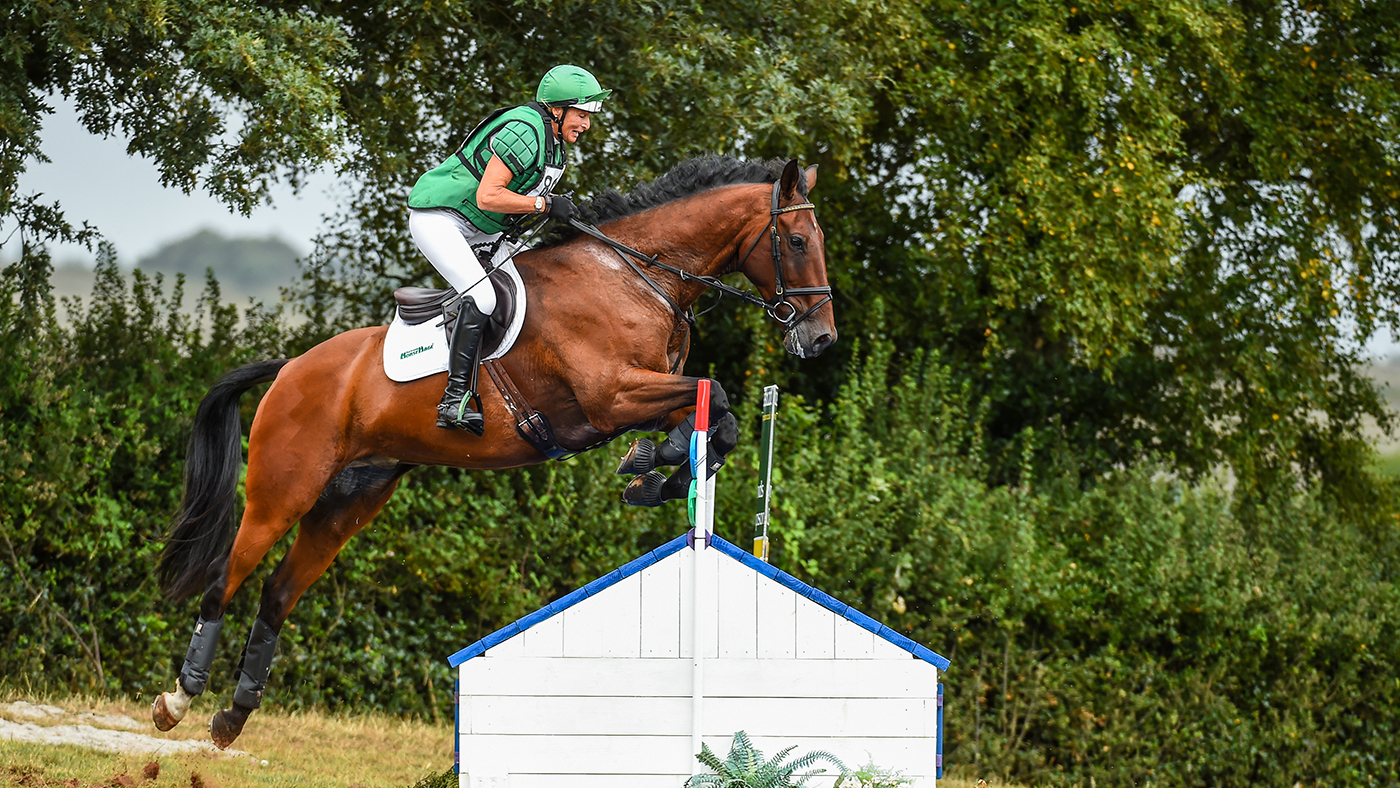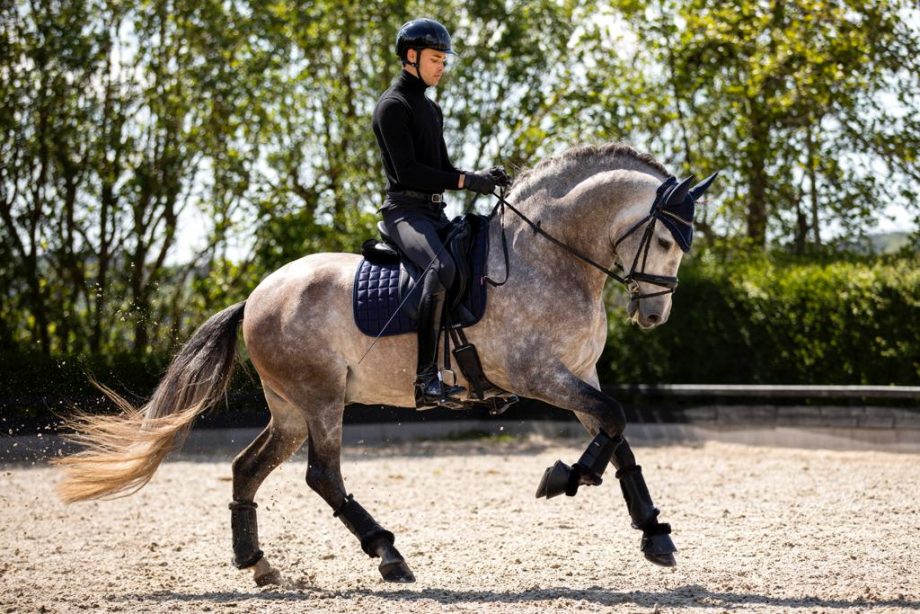In the first of a series looking at how to market yourself as a rider, Stephanie Bateman delves into the world of social media and discovers the dos and don’ts of promoting yourself online
Being a professional rider is no longer just about producing and competing horses, it’s about running a business, and effective social media is key to this.
“Social media gives you the opportunity to put yourself in front of the world, including prospective sponsors and owners,” says Ashley Rossiter, managing director of PR and social media marketing agency Mirror Me PR.
“It gives you the chance to be seen by a huge audience and highlight your progress, horses, achievements and professionalism.”
Raising awareness of your own personal brand, connecting with the audience and raising the profile of the sport are also achieved through social media.
“It’s your shop window to the world,” offers Sarah Skillin, founder of marketing and commercial agency EquiConsulting. “It’s where people go to for everything, so it’s key for everyone to have a presence.”
It’s also a great way to promote sponsors and brands.
“The first thing brands look at when searching for riders to sponsor is their presence on social media, even if you’re riding at top level,” says Debra Hargrave of the eponymous PR company. But Sarah counters: “As much as brands will, and should, look at a social following, it isn’t the be all and end all and it could be quite short-sighted of brands to use a rider’s social presence as the main indicator as to whether they are the ones to sponsor. Influencing is often done well on a word of mouth or personal level. Riders shouldn’t put too much pressure on themselves to perform on social, over performing on the field.”
DIY or get the in the pros?
Managing social media accounts is time-consuming, so what are the options?
“Doing it yourself, you have complete control over what goes out but you have to find the time,” says Sarah. “Handing it over completely means you can focus on your job, but it can remove the personal element.”
A combined approach can be the answer.
“One way that works well is to collate the material such as videos and photos yourself, and then send them to a PR who will schedule posts to go out across the different platforms throughout the week,” says Sarah.
Another option is to ask for help with certain aspects such as responding to followers. “That can take the pressure off,” adds Sarah.
What does it cost to pay a PR for this?
“I charge from £200 plus VAT per month, but that is also PR, sponsorship and
communications management,” tells Sarah. “Some riders’ initial response is that they can’t afford it, but that equates to their earnings from four lessons a month. Is paying someone else more cost-effective?”
If you’re after advice on how to do it properly, there are options that could help.
“We set up Pro Rider Academy for riders who don’t have a big budget, to educate them and give them the tools in self-promotion,” says Debra. “There are three packages at set prices. Some riders enjoy doing it themselves but lack the knowledge.”
Which platform?
The most popular social media platforms are Twitter, Facebook, Instagram, TikTok and LinkedIn.
“If you only have time to manage one, then only have one,” says Ashley. “Ideally, two or more give you more discovery opportunities, but you need to keep them up to date.”
Each platform has its own audience, personality and demographic.
“Facebook is good for business and achieving a wide reach using longer videos and posts,” says Sarah. “Twitter is good for news and short, sharp snippets; Instagram is great for posting short videos and photos, and TikTok is fun but takes more effort. LinkedIn is great for engaging with sponsors and owners commercially.”
Posting the same content across platforms is acceptable and time-effective.
“If something happens instantly and organically, post it as a story,” advises Debra, referring to the feature for temporary content which is particularly popular on Instagram.
“Don’t forget you also need consistency on your grid [the posted pictures you see
by clicking on a profile on Instagram], so it needs to be across both and make sure you tag sponsors and use appropriate hashtags.”
When it comes to content, a good mix of video and images is advisable.
“People love to see behind the scenes, which is good for product placement, too,” says Debra. “They also like round-ups of shows, news updates and introducing the horses and their personalities. Humour works well but keep it sensible.”
If you mention sponsors and their products, check out the Advertising Standards Agency and Competition and Markets Authority guidelines for influencers, and be aware of when you need to use #ad.
When things go wrong
Life with horses is never perfect. “Sharing the highs and lows isn’t a bad thing but getting the balance right when sharing news needs thought,” advises Ashley.
Be honest and transparent.
“Don’t be afraid to pull together a video to explain what went wrong,” says Sarah.
When it comes to reporting perhaps the worst news – the death of a horse at an event – most governing bodies have guidelines in place which you should bear in mind.
“The key with posting anything is to think before you post,” says Debra. “Don’t get into rows with people – sleep on it before you comment, or don’t comment.”
Double check photos and videos, too.
“Don’t post anything that is going to be classed as bad welfare,” says Sarah. “If you’ve posted something you shouldn’t, remove the post and respond apologising and explaining what happened. Don’t get caught up with reading negative comments.”
If things get really nasty, it might be worth calling in a professional to help you.
“A professional PR person will help you deal with requests from the press and put together a statement for you,” says Debra.
How the riders do it: five-star winner Laura Collett (pictured top)
“I see social media as part of the world we live in and try to use it to my advantage and to promote sponsors. I prefer to write it myself as people feel closer to you.
“I post important things on Facebook and Twitter but everyday stuff goes on Instagram. Some days I post lots and other days nothing.
“I nd people like the behind-the-scenes content because that’s what they don’t get to see. I post when things go wrong as I think it’s important for people to understand everyone goes through the bad times. Everyone is entitled to their own opinion, but I don’t reply to negative comments because I think you just fuel people by doing that.”
How the riders do it: Olympic eventer Mary King

“I post an update on Facebook once a month about what I’ve been doing with the horses and try to mention some sponsors without it seeming like an advertising piece. I never post anything about my personal life. I also use Facebook to post something for my sponsors such as sharing a post for them.
“I have a loyal following, but don’t reply to people – I just use it as a platform to keep people informed. I’m not in the limelight like I used to be, but a lot of sponsors have stuck with me and a lot of it is because of the big following I have on Facebook. I know I should probably be on Instagram too but I don’t have the time.”
How the riders do it: showjumper Joe Stockdale

“One of my main aims with social media is to encourage more people to follow showjumping through my passion and experience.
“Another huge benefit is giving back to my owners, sponsors and supporters.
“It is great having someone to help me with my social media like filming my vlogs. You need someone you can trust and who knows the industry. I use most platforms as they target different age groups, and I try to post most days.
“People enjoy behind-the-scenes content, getting to know the horses and my team.
“I do document my ups and downs. For example, I retired Cash in the grand prix in Norway as she wasn’t a big fan of the rain. I explained on social media why and people were understanding.”
How the riders do it: dressage rider Olivia Towers
“When posting about my personal struggles, I found people loved my honest approach. I turned it into a business where I support people and it financially supports my career.
“It takes a huge amount of time but I create my own content, although I do have a videographer.
“I started on nearly all the platforms but as I developed, I let a few go – it’s good to have at least two.
“I like to create an emotional connection through real life. One of my most popular vlogs was me sat in my lorry crying after a terrible show. People really connected with it.
“As for deleting comments, I leave them and reply unless it gets nasty, in which case I will block them and delete comments. If I do answer, I keep it kind.”
Copyright: the rules
When it comes to using photos and repurposing online and print content, there are protocols, as H&H magazine editor Pippa Roome explains.
“Words and pictures are covered by copyright and legally you can’t reproduce them without permission,” says Pippa. “It costs money to produce content and photos, so by taking it and giving it away free, you are denying the platform income.
“The best course of action is to get in touch and ask if you’re allowed to promote the article. We don’t let riders put up full readable pages of H&H, but we are happy for them to post a photo of either the whole page which isn’t readable or a small section which is readable, with a mention of Horse & Hound. It’s ne to share a link to a piece online as that is good promotion.
“If you want to use a photo for an advert or on your website, get permission in writing. You may have to pay a fee. Most photographers are fairly clear when selling digital copies what they can be used for. If in doubt, ask.”
Social media top tips
● Keep your professional accounts separate from personal accounts.
● Always be brand loyal.
● Never bring your sport into disrepute.
● Promote brands and sponsors using the correct tags and hashtags.
● Engage with posts to improve your reach.
● Post little and often; think before posting.
● Ask for help if you don’t have time.
● Be aware of the guidelines around commercial links and when to use #ad.
Ref: 4 February 2021
You might also be interested in…

‘It’s not easy to go out there and be yourself’: Carl Hester discusses his fears about social media and sport
With debates in the dressage world surrounding top hats and helmets just one equestrian topic that has been gaining a

Let’s talk about being #gifted on social media
Have you seen #gifted and #ad (and other derivatives!) appearing on riders’ content at the moment? How does it make

Behind the social media account — Matt Harnacke
In addition to growing his own social media platforms, Matt has been involved with the FEI in a presenting role,

Meet 4 of equestrian social media’s big hitters — how they’ve become successful and the dark side of business
Social media gives everyone the chance to become an equestrian ‘celebrity’ — we meet some that have achieved it


